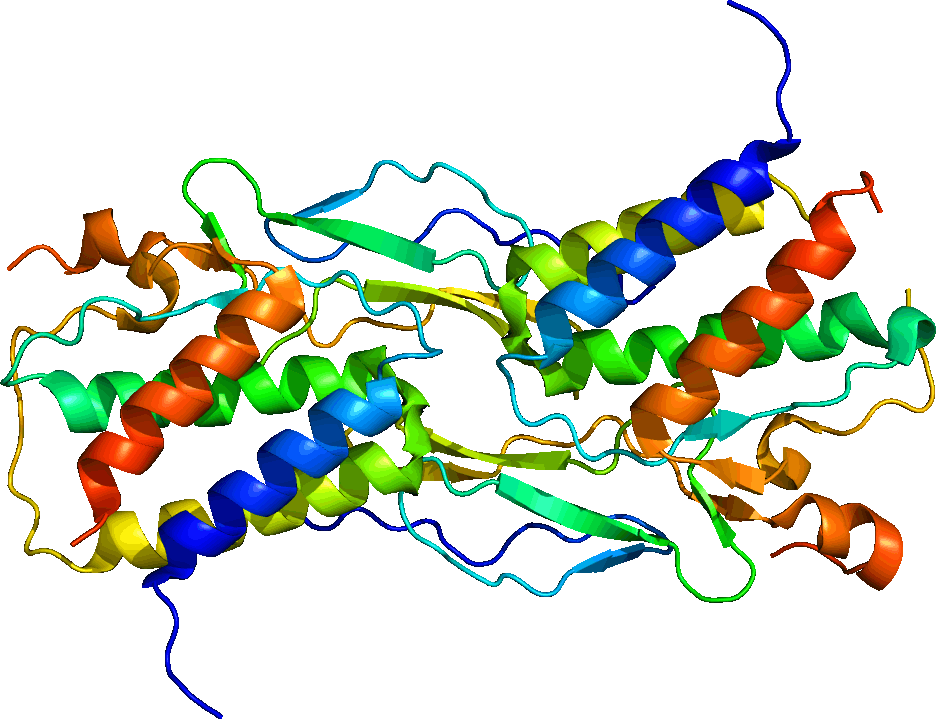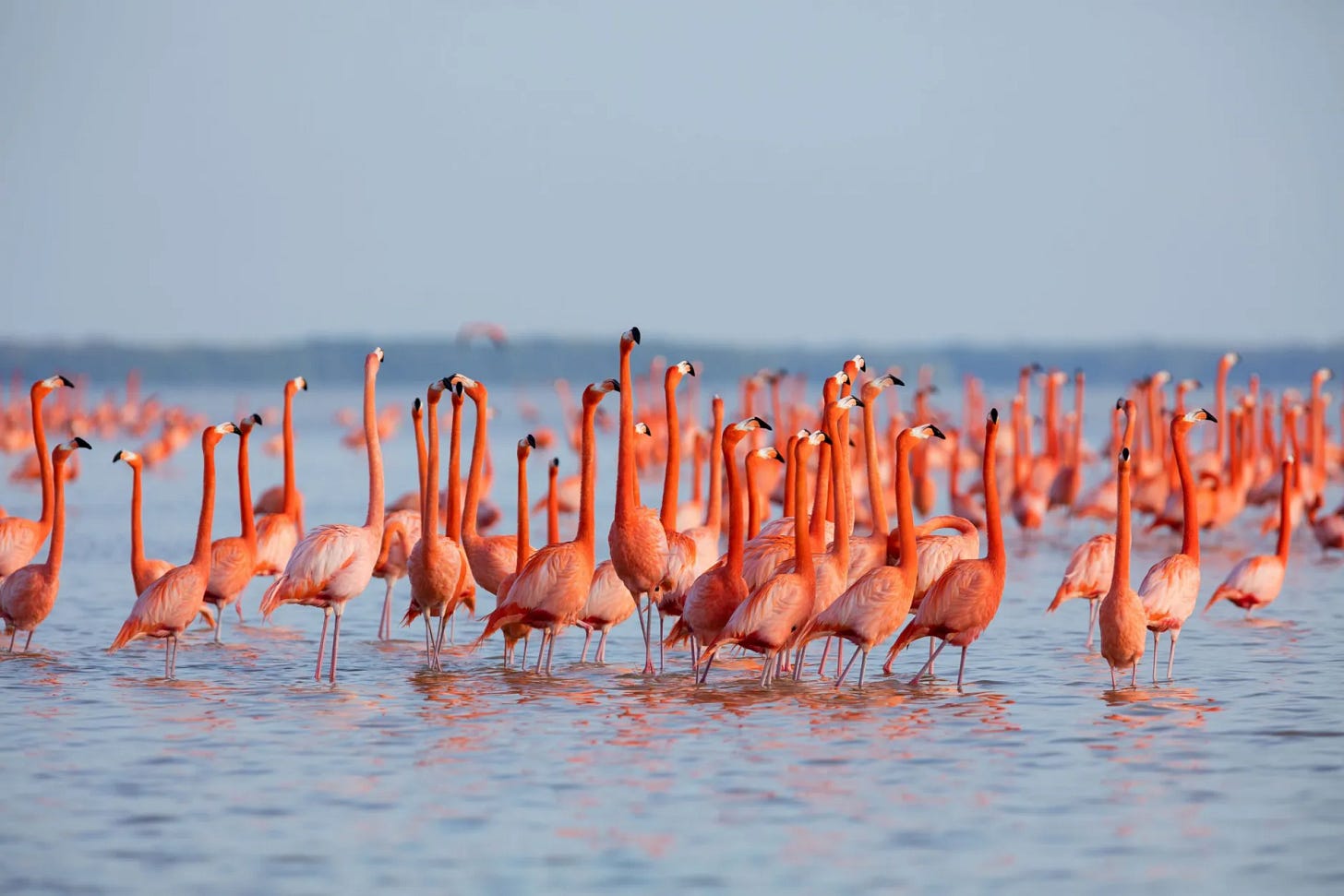EXERCISE HORMONES / EVOLUTIONARY INCENTIVES
Exercising makes you want to exercise more, but is that evolution's Hunger Games?
A fascinating new study shows how exercise makes you want to do more exercise: in mice after an intense workout, muscles release a molecule called interleukin 15, and this molecule then makes the mice voluntarily run longer distances. It’s the voluntarily part that’s so interesting: it indicates not just superior abilities, but a change in cognition. Human muscles also release the same molecule, and although there’s no data on how it changes human behavior, it’s intriguing to think that something as seemingly intangible as the desire to exercise could in principle be imparted pharmacologically, just like Ozempic imparts the feeling of satiety — perhaps we will soon add something similar to our growing roster of biomimetic behavior-correcting drugs. Are you looking forward to an injection that makes you want to go to the gym?
It’s still not completely clear how interleukin 15 causes a behavioral change. But regardless of the specific mechanism, there’s something very deep about this positive feedback loop: moving your body makes you move your body more. If we lose the vocabulary of “exercising”, and remember that motion, in general, is the main feature that distinguishes an animal from a non-animal (whereas brains evolved to control this motion), then this positive feedback loop of motion creating more motion starts to look pretty significant indeed. And it is also very puzzling.
If you think about it, there’s lots of other examples like this, when a body rewards you for doing something by allowing you to do it even better. Muscles work like that at the most basic level: if you exert them, they grow larger, and then, you can exert them even more. Brains work like that too: the more you learn, the better you are at learning. The reason this is puzzling is this: why doesn’t nature just make all of our muscles stronger and all of our learning better? An animal that is born with huge muscles has an advantage over an animal that needs to spend years in training to be competitive. So why does evolution create these strange incentives hinging on individual choice — start exercising and only then get hooked! — rather than just replacing everyone with hunks?
One possibility is that what we are witnessing in cases like this is a sort of evolutionary primary, a Hunger Games-style marketplace of potential evolutionary winners. Evolution operates at the scales of millions of years, but it lets us do the preliminary work on the timescales of our own lives. Animals with slightly superior abilities, with slightly stronger motivations, slightly larger muscles, run around more than others. That makes them produce molecules that enhance their abilities and motivations even further. This, in turn, elevates them above competition even more, and so their chances to pass on their superior abilities are further increased. Eventually, over millions of years, evolution will probably optimize these abilities to the point at which further enhancement will become unnecessary, but our own internal competition is making the process faster.
There’s a term for this: the Baldwin effect. It is a theoretical concept proposed by the psychologist James Mark Baldwin in 1896, describing a scenario in which the capacity of a species to learn or enhance itself, over time, gets gradually assimilated into its genetic makeup, becomes “hardwired”. For example, animals that migrate to cold climates might initially adapt to it by changing their behavior — huddling, maybe — but over time are likely to develop thick fat tissue, or other permanent features that protect them from the cold.
It is extremely difficult to prove that the Baldwin effect had played a role in any specific instances of past evolution. But we can speculate on where the Baldwin effect is likely to play a role the future. My favorite example is flamingoes. These birds have elaborate courtship rituals reminiscent of Bridgerton: a crowd of flamingoes, both male and female, prance in synchronized motion with the ultimate goal of attracting partners. The best dancers with the most colorful feathers attract correspondingly dazzling mates. But how colorful you are depends on the diet — the pink color of flamingoes comes from carotenoids in the algae they consume. The flamingoes that eat well and become bright pink as a result, get to be the top dancers, whereas those that, for whatever reason, fail to accrue a bright color may not even be allowed to participate. It’s likely that over millions of years, flamingoes will all become thoroughly pink by purely genetic means, without the role of diet, and their dances will become pre-programmed and ritualized, rather than serving a functional purpose of a marketplace as they do now.
Self-enhancing muscle growth, although we take it for granted, may also be an example of the Baldwin effect in action: a way for evolution to pre-select the most likely candidates for future evolutionary greatness. It is achieved both by granting larger muscles to those who use them more, and by rewarding the highly mobile individuals with interleukin 15, which makes them want to be even more mobile.
There are clearly lots of other ways in which our bodies reward us for doing something good by somehow enhancing themselves. (This always seems like a bit of a scam, as if your body were remote controlled: if it knows how to make all those good hormones, why isn’t it just making them all the time, so we don’t have to bother with all the fibre and treadmills?) Case in point is another molecule that muscles release during exercise: irisin. It acts on fat tissue, converting white fat into brown fat. Brown fat cells constantly burn fuel and generate heat, which is different from white fat cells, whose job is to store energy. Exercise, through irisin, makes these fat-storing cells turn into fat-burning cells, and so in addition to the calories used for exercise per se, you end up also dissipating extra calories as heat. You can see why there’s enthusiasm around irisin — its original discovery in 2012 by Bruce Spiegelman’s lab is by now cited almost 6000 times. I was at Harvard Medical School in 2012, and I remember a debate at Spiegelman’s Wednesday pizza talk: the sticking point was whether it made sense for muscles, already overheated due to exercise, to cause even more heating of the body through brown fat. Spiegelman’s argument was that overheating is not really a big problem for muscles, but on the contrary, extra heat might be a way to speed them up. I think this especially makes sense if we consider that brown fat evolved during the time when our ancestors were small and nocturnal, constantly battling excessive heat loss. Irisin, it appears, is evolution’s way of allocating scarce resources: those animals that are prudent enough to be active, despite the nighttime cold, get to heat up a little more, and run around a little faster, taking food away from the sloths that can’t be bothered to get out of their den. This is why being healthy still takes so much damn work: competition was always the point.
Maybe, this is how evolution achieves more with less. Simply picking animals with the largest muscles over the ones with small muscles is easy, but that only achieves so much. However, if you allow animals, with their complicated planning and abstract thinking, to compete for the ability to be strong, then you might end up not just with stronger animals, but also in animals that are simultaneously more agile, more efficient, more intelligent.
Everything I said about muscles can, in fact, also be said about brains: an animal that strives to learn might be more useful for evolution than an animal that simply learns better naturally, because this desire to enhance yourself will get passed down together with your learning abilities. For example, the Baldwin effect has been invoked to explain one of our most significant evolutionary leaps: the acquisition of language. For something so foundational to our cognition, we evolved it very rapidly. But if we consider that learning a language must have given early humans tremendous evolutionary advantages, it is maybe not that surprising that language abilities quickly became hardwired. Wanting to communicate may have been just as much a factor in our evolution as the physical capacity of our brain for learning sounds and meanings.
Darwinism taught us to think about our ancestors in purely neutral terms: acquired traits do not get passed down, so whatever decisions our forebears made during their lives were irrelevant — all that mattered was the genetic lottery that decided who stayed alive. But because of the Baldwin effect, it may well be that our ancestors were, in fact, an active part of molding our bodies and brains to be what they are today. Looking back at the thousands of generations of struggle and competition that came before us, we get to thank our ancestors not just for beating the odds, but for their unfailing, persevering will.




